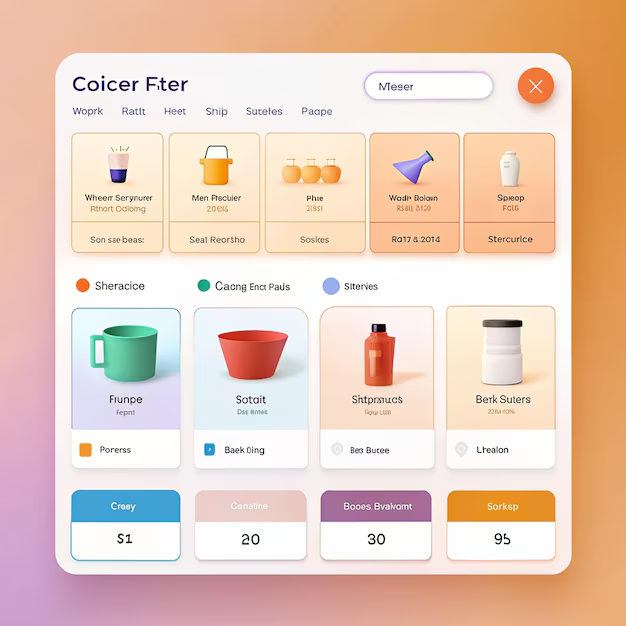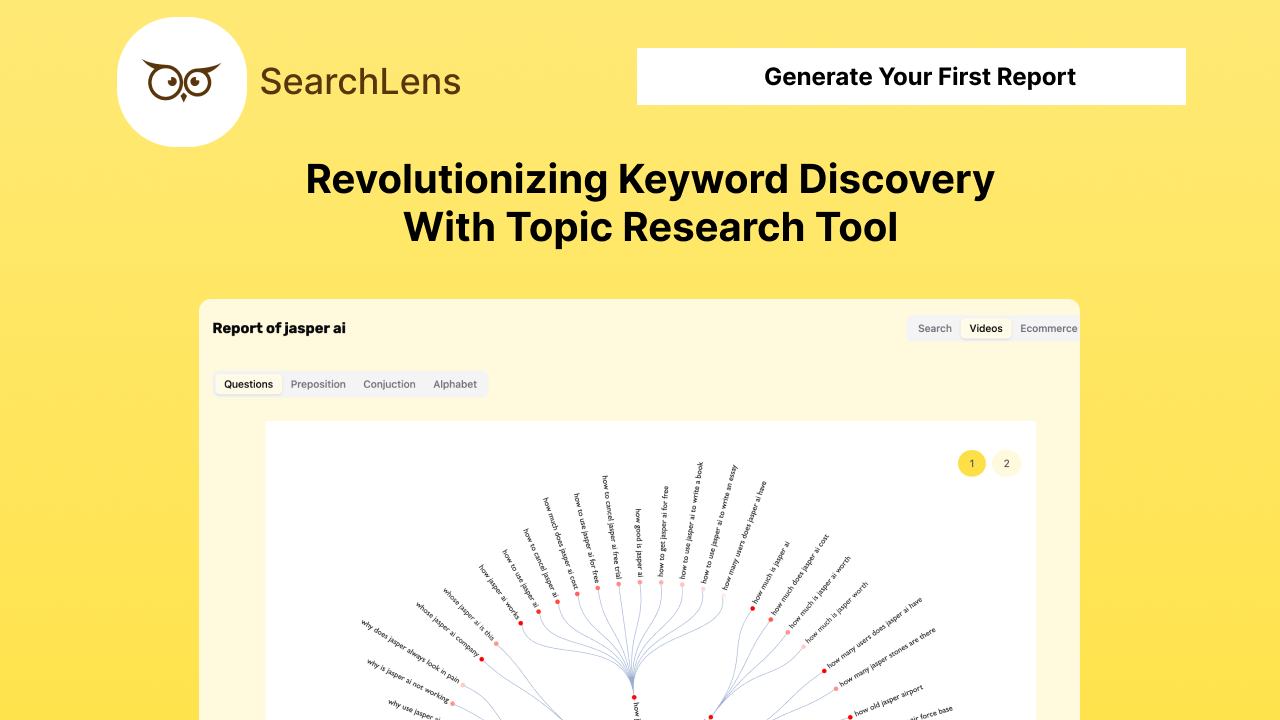
How Major Brands Use Search Insights for Decision-Making
Unlock the strategies major brands use to harness search insights for data-driven decision-making and sustained growth.
By Shishir
Published on
13 minutes
Table of Contents
In the fast-paced world of business, staying ahead of the competition is no easy task. Brands need to constantly adapt to changing consumer preferences, emerging trends, and market dynamics. But how do they do it? One of the most powerful tools at their disposal is search insights. By analyzing what people are searching for online, major brands can make informed decisions that drive growth and innovation.
In this blog, we’ll dive into how search insights are transforming decision-making for businesses, the strategies they use, and why tools like Searchlens are essential for unlocking the full potential of search data.
What Are Search Insights?
Search insights refer to the data and patterns derived from analyzing search engine queries. This includes the keywords people use, the questions they ask, and the trends that emerge over time. For example, if thousands of people suddenly start searching for “sustainable packaging,” it’s a clear signal that consumers are becoming more environmentally conscious.

For brands, this information is gold. It provides a direct window into the minds of their target audience, revealing what they care about, what problems they’re trying to solve, and what products or services they’re interested in.
Why Search Insights Matter for Brands
-
Understanding Consumer Behavior
Search insights help brands understand what their customers are looking for. For instance, if a beauty brand notices a spike in searches for “vegan skincare products,” it can develop new products to meet this demand.
-
Predicting Trends
By analyzing search trends, brands can stay ahead of the curve. For example, during the pandemic, searches for “home workout equipment” skyrocketed. Brands that capitalized on this trend early saw significant growth.
-
Improving Marketing Strategies
Search insights allow brands to create targeted marketing campaigns. If a brand knows what keywords their audience is using, they can optimize their ads and content to reach the right people at the right time.
-
Enhancing Product Development
Search data can reveal gaps in the market. If consumers are searching for a product that doesn’t exist, brands can use this information to innovate and fill the void.
How Major Brands Use Search Insights
Let’s take a closer look at how some of the world’s biggest brands are leveraging search insights to make smarter decisions.
1. Nike: Staying Ahead of Fitness Trends
Nike is a master at using search insights to predict and capitalize on fitness trends. By analyzing search data, the brand identified a growing interest in home workouts and athleisure wear. This led to the development of new product lines and marketing campaigns focused on these trends.
For example, when searches for “yoga pants” surged, Nike introduced a range of stylish and functional yoga apparel. This not only boosted sales but also strengthened the brand’s connection with its audience.

2. Coca-Cola: Crafting Personalized Campaigns
Coca-Cola uses search insights to create personalized marketing campaigns. By analyzing what people are searching for, the brand can tailor its messaging to resonate with different demographics.
For instance, during the holiday season, Coca-Cola noticed an increase in searches for “gift ideas” and “holiday recipes.” The brand responded by launching a campaign that featured its products as the perfect addition to holiday celebrations.

3. Amazon: Optimizing Product Recommendations
Amazon is a prime example of a brand that uses search insights to enhance the customer experience. By analyzing search queries, Amazon can recommend products that are most likely to appeal to individual users.
For example, if a customer searches for “wireless headphones,” Amazon might recommend related products like phone cases or Bluetooth speakers. This not only improves the shopping experience but also increases the likelihood of a purchase.

4. Netflix: Predicting Hit Shows
Netflix uses search insights to predict which shows and movies will be popular. By analyzing search trends, the streaming giant can identify emerging genres and themes that resonate with audiences.
For example, when searches for “true crime documentaries” spiked, Netflix invested in producing more content in this genre. The result? Hit shows like Making a Murderer and Tiger King.
The Role of Searchlens in Unlocking Search Insights
While many brands rely on search insights, not all of them have the tools to analyze this data effectively. That’s where Searchlens comes in.
Searchlens is a powerful tool that helps brands uncover hidden patterns in search data. By providing real-time insights and actionable recommendations, Searchlens enables businesses to make data-driven decisions with confidence.

For example, a fashion brand using Searchlens might discover that searches for “sustainable fashion” are on the rise. Armed with this information, the brand can launch a new line of eco-friendly clothing and create marketing campaigns that highlight its commitment to sustainability.
How to Get Started with Search Insights
If you’re a business owner or marketer looking to leverage search insights, here are some steps to get started:
-
Identify Your Goals
What do you want to achieve with search insights? Whether it’s improving your marketing strategy, predicting trends, or enhancing product development, having clear goals will guide your efforts.
-
Choose the Right Tool
Tools like Searchlens make it easy to analyze search data and extract meaningful insights. Look for a tool that offers real-time data, user-friendly features, and actionable recommendations.
-
Analyze Search Trends
Pay attention to the keywords and phrases your target audience is searching for. Look for patterns and trends that can inform your decisions.
-
Take Action
Use the insights you’ve gathered to make data-driven decisions. Whether it’s launching a new product, optimizing your website, or creating a targeted ad campaign, take action based on what the data tells you.
-
Monitor and Adjust
Search trends are constantly evolving, so it’s important to monitor your results and adjust your strategy as needed.
Final Thoughts
In today’s competitive landscape, search insights are no longer a luxury—they’re a necessity. By understanding what their customers are searching for, brands can make smarter decisions, stay ahead of trends, and deliver products and services that truly resonate with their audience.
Whether you’re a small business or a global corporation, tools like Searchlens can help you unlock the full potential of search data. So why wait? Start exploring search insights today and take your decision-making to the next level.